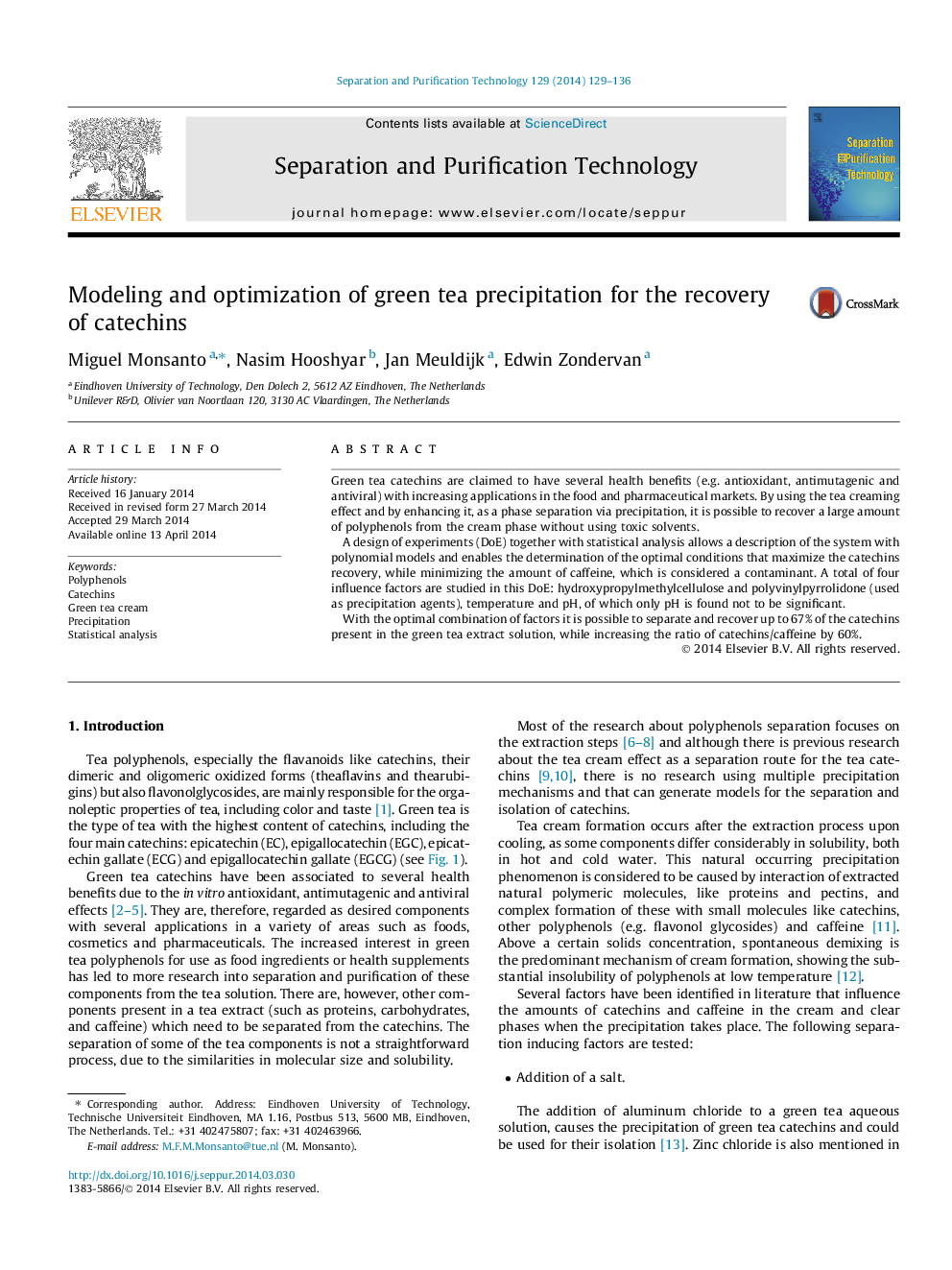| Article ID | Journal | Published Year | Pages | File Type |
|---|---|---|---|---|
| 641238 | Separation and Purification Technology | 2014 | 8 Pages |
•Statistical analysis determines which parameters influence green tea precipitation.•PVP is the most significant factor and pH is the only non significant factor.•The recovery yield of the gallated catechins is higher than the non gallated forms.•Optimization maximizes the amount catechins in the cream phase.•The recovery yield for the green tea catechins from the cream phase is 67%.
Green tea catechins are claimed to have several health benefits (e.g. antioxidant, antimutagenic and antiviral) with increasing applications in the food and pharmaceutical markets. By using the tea creaming effect and by enhancing it, as a phase separation via precipitation, it is possible to recover a large amount of polyphenols from the cream phase without using toxic solvents.A design of experiments (DoE) together with statistical analysis allows a description of the system with polynomial models and enables the determination of the optimal conditions that maximize the catechins recovery, while minimizing the amount of caffeine, which is considered a contaminant. A total of four influence factors are studied in this DoE: hydroxypropylmethylcellulose and polyvinylpyrrolidone (used as precipitation agents), temperature and pH, of which only pH is found not to be significant.With the optimal combination of factors it is possible to separate and recover up to 67% of the catechins present in the green tea extract solution, while increasing the ratio of catechins/caffeine by 60%.
Graphical abstractFigure optionsDownload full-size imageDownload as PowerPoint slide
